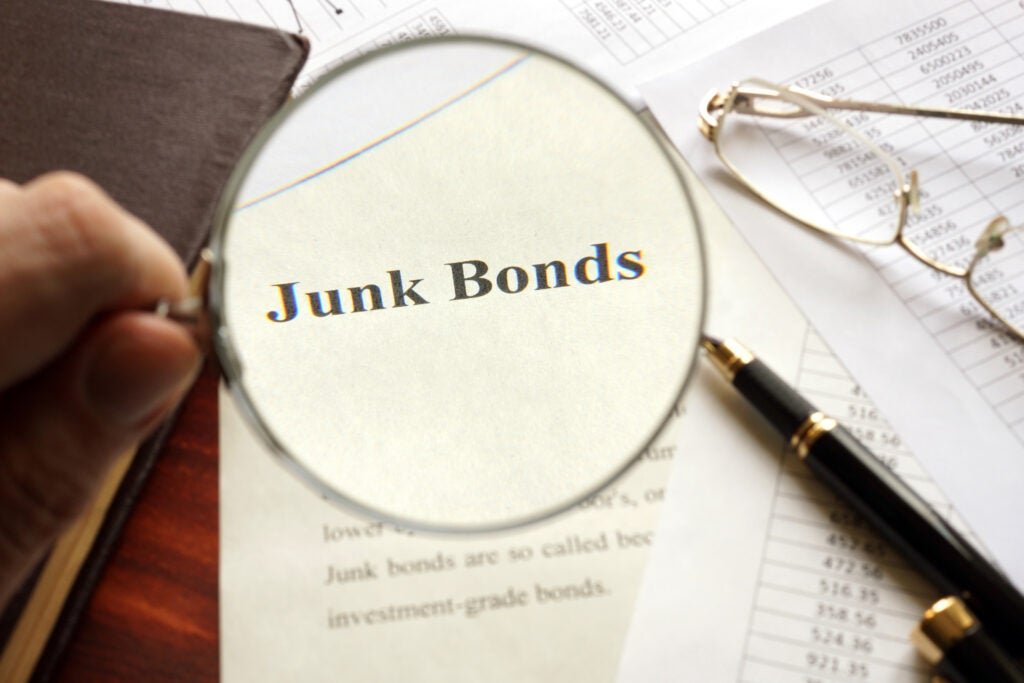While President Donald Trump ramps up his global tariff campaign, sending warning letters to 14 countries, the U.S. junk bond market is behaving as if none of it matters.
High-yield credit spreads—a closely watched barometer of risk in lower-quality corporate debt—have dropped to 286 basis points over comparable Treasuries, near year-to-date lows.
That’s a sharp retreat from early April, when spreads blew out to over 460 basis points in response to Trump’s initial tariff salvo.
Despite new threats targeting key trading partners, credit investors appear convinced that the U.S. economy will weather the trade storm.
Yet, the composure of high-yield spreads may be dangerously misleading. When credit markets fail to price in macro risks, they create stress no one sees until it’s too late—and that’s the time bomb. Should trade tensions lead to macroeconomic turbulence, junk debt could reprice abruptly and violently, sending shockwaves across the whole financial system and fueling the threat of a broader crisis.
“On the surface, the credit markets appear calm. Credit spreads are low, the demand for these bonds is healthy and default rates overall remain relatively low. Under the hood, however, some stress signals are starting to show,” said analyst Michael Gayed, CFA in an email comment.
“The extra yield investors demand above and beyond the risk-free rate, go back to pre-Liberation Day levels,” he added.
Chart: Junk Bond Spread Has Completely Wiped Out Tariff-Related Risks
A Calm Credit Market May Be Overlooking An Economic Fallout
On prediction platform Kalshi, the probability of a U.S. recession this year sits at just 19%, barely above the 17% low reached in January. On May 1, it had surged to as high as 61%.
The drop in junk bond spreads suggests markets are pricing in minimal risk of recession, earnings deterioration or funding stress in the corporate sector.
Since April lows, the iShares iBoxx $ High Yield Corporate Bond ETF HYG has rallied almost 5%, while a broader measure of risk-free
Earlier this week, the White House sent formal tariff warning letters to 14 countries—mostly in Asia—including Japan and South Korea. Absent bilateral trade deals, those nations face new “reciprocal” tariffs between 25% and 40%, starting Aug. 1.
Trump also warned the European Union that a similar letter would be sent within days, threatening tariffs as high as 200% on pharmaceuticals and 50% on copper imports.
In a note Wednesday, Goldman Sachs economist Elsie Peng said the Trump administration has already implemented a “range of tariff increases at both the country and sector levels,” with further actions expected. Goldman estimates the effective U.S. tariff rate has already risen by 9 percentage points—and may reach 14 points if additional sectoral tariffs are enacted.
These types of shocks, Peng noted, tend to “meaningfully pass through to consumer prices,” citing the 2018–2019 trade war experience.
High-Yield Spread: Why It Matters Now
The compression of high-yield spreads to 286 basis points signals calm, but risks may be building beneath the surface.
“Those juicy 7–8% yields might look tempting, but there’s credit risk in there that most investors haven’t had to really consider in a while,” said Michael Gayed, CFA. “If credit spreads start widening and defaults tick up, the price direction on junk bonds can quickly turn south.”
After a decade of cheap money, debt is now more expensive and credit quality matters.
With trade tensions rising, volatility could return fast.
Read now:
Image: Shutterstock

